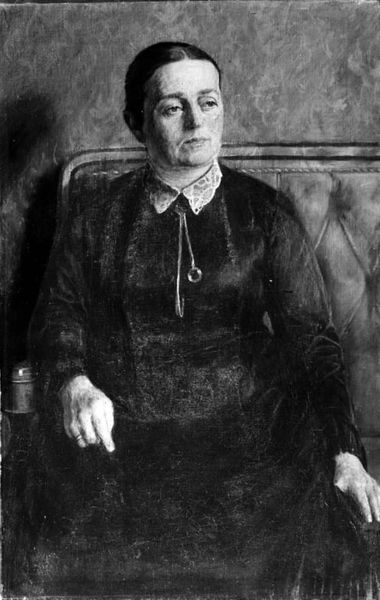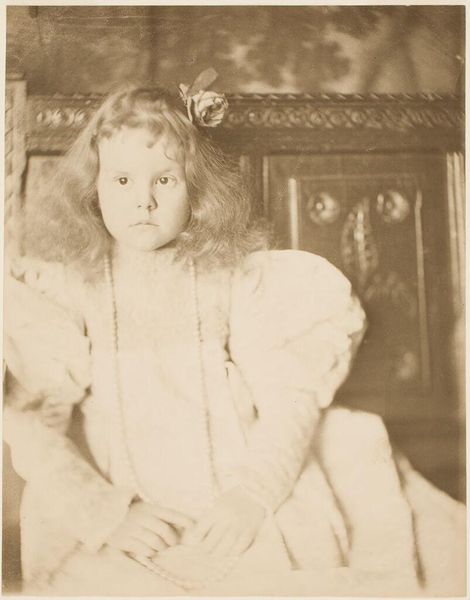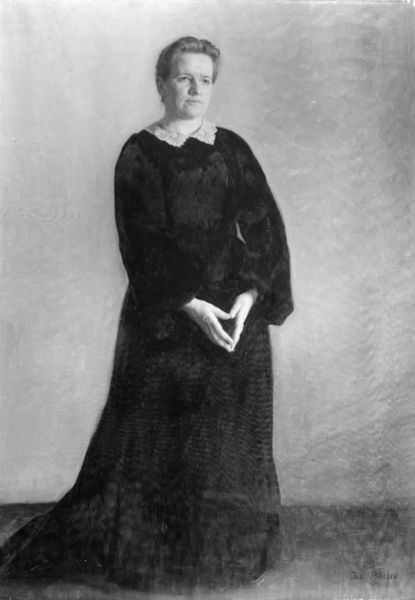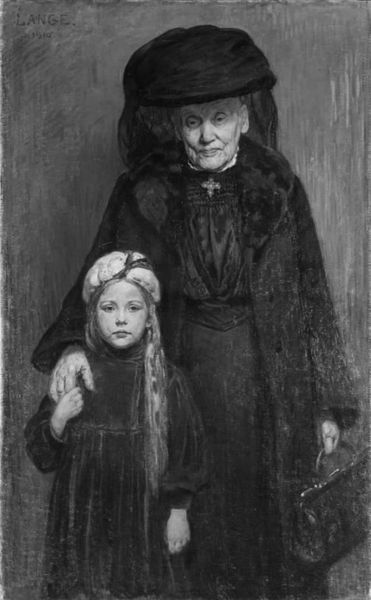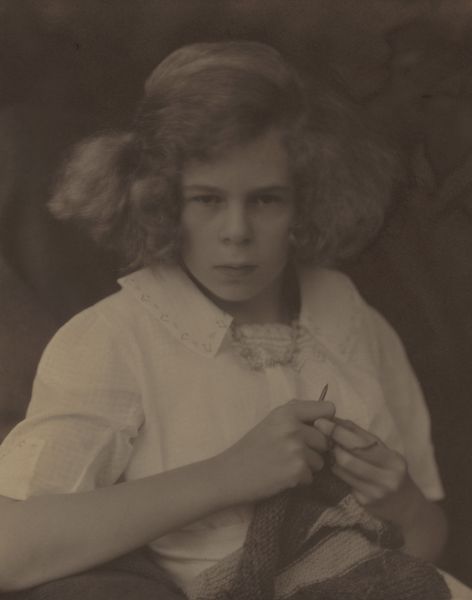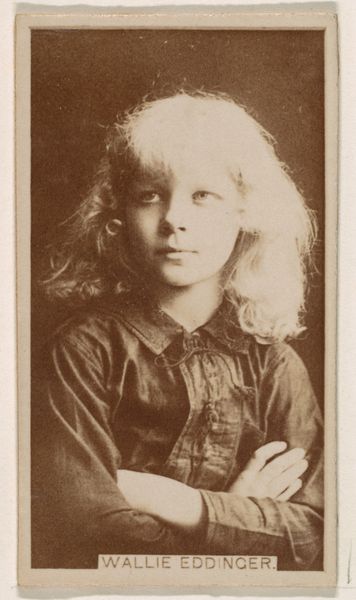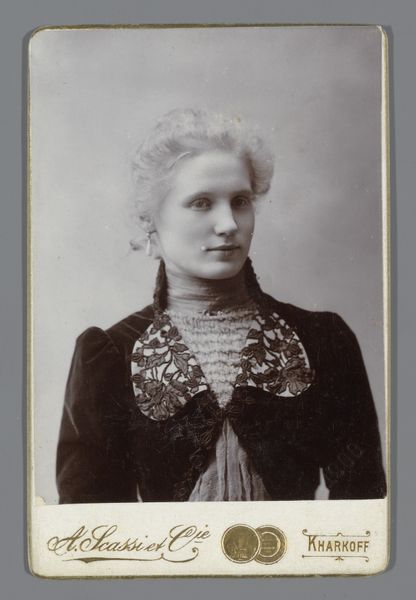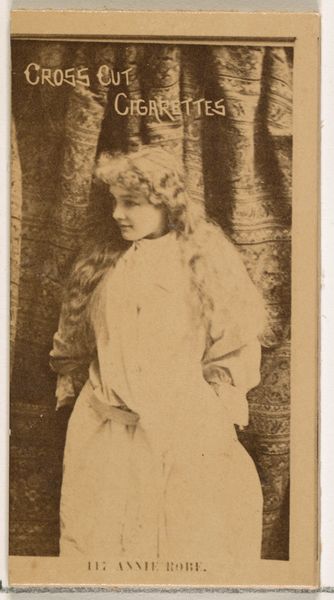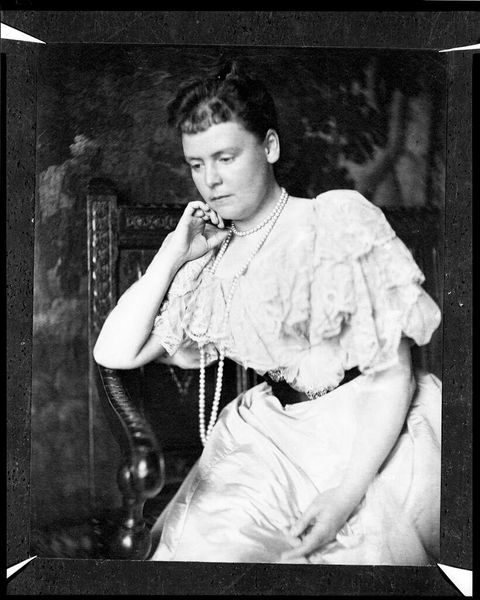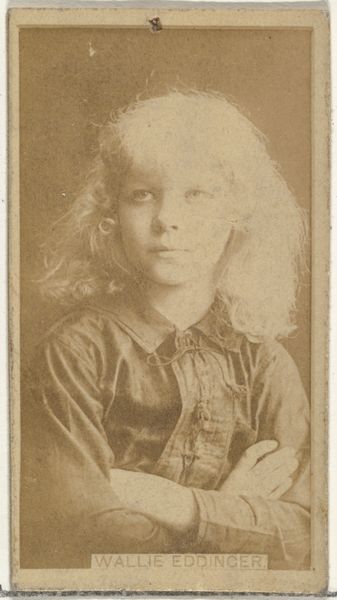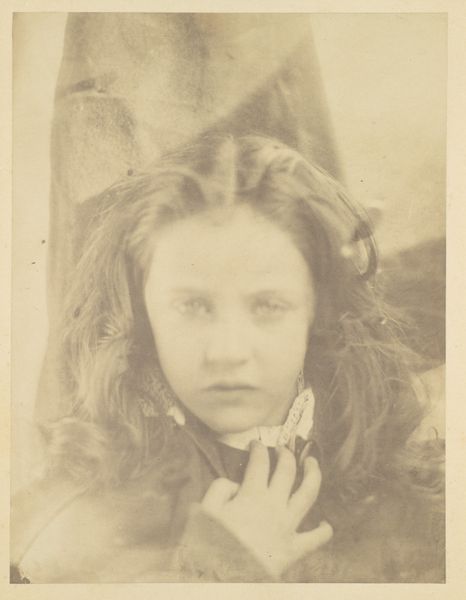
Dimensions: 80 cm (height) x 63 cm (width) (Netto)
Curator: This oil on canvas piece, held here at the SMK, is "En lille pige" - or "A little girl," if you will. Painted in 1898 by J.C. Schlichtkrull. The interesting thing about this painting to me is the way it walks the line between Realism and a kind of quiet Impressionism. What are your first thoughts? Editor: Immediately, I’m struck by how somber the palette is. There's an almost photographic quality to the grayscale. It's definitely of its time; I wonder about the constraints placed upon both artist and model? What was the purpose of these sorts of subdued portraits then? Curator: Good question! Photographic influence is definitely there, it mirrors how people wanted to commemorate others in those days. There’s this incredible detail in the smocking on her dress and the subtle highlights that create depth – I can feel Schlichtkrull trying to convey the inner life of this child, despite the formal setting. But what sort of 'inner life' can we project on a figure like this, really? Editor: It's all rather stoic, isn't it? Almost haunting. I can’t help but consider the socio-economic context. Was this portrait intended to signal status? Perhaps document childhood before industrialization and the World Wars really took hold? These painted faces from history feel like fragile echoes. Curator: That stoicism may simply be the result of a long, static sitting! I do get your point about status, although her clothing isn't overly embellished. There's a vulnerability in her gaze and posture though, something I don’t think a purely performative portrait would communicate. You can look at all those official royal portraits; they radiate authority, control… This child isn’t commanding anything! She almost melts into the background. Editor: True! And I agree about the gaze; her eyes are definitely the focal point of the composition. So perhaps Schlichtkrull sought some middle ground. This painting seems to suggest how portraiture could begin capturing individuals amid social forces, offering more than a status symbol. Curator: I’m going with that! To me it is about individual interiority and those details we just noticed, subtly expressed on a traditional form. Editor: Definitely leaves us pondering what stories reside behind such formally staged yet ultimately expressive portraits. Curator: Agreed. There are always hidden worlds within them for us to find.
Comments
No comments
Be the first to comment and join the conversation on the ultimate creative platform.
